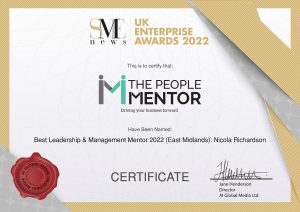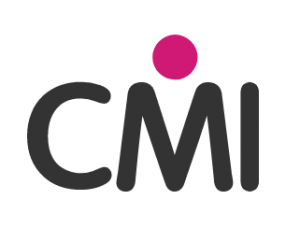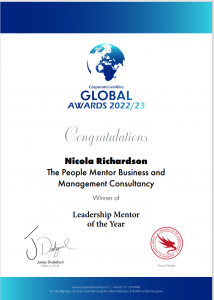Motivation is a complex topic that has been studied extensively in the fields of psychology and management.
Motivation refers to the factors that drive people to act in a certain way or to achieve certain goals.
There are different types of motivators, including hygiene factors, intrinsic motivation, and extrinsic motivation. In this blog, we will discuss each of these types of motivators in more detail.

Hygiene factors are also known as maintenance factors or dissatisfiers.
These are the basic factors that must be present in a work environment to avoid dissatisfaction.
Frederick Herzberg did some detailed analysis in the 1950s and 60s to understand employees’ satisfaction.
Examples of hygiene factors include salary, job security, working conditions, and company policies.
If these factors are not met, it can lead to dissatisfaction among employees. However, simply meeting these factors does not lead to motivation.
It merely avoids dissatisfaction.
Intrinsic motivation refers to the internal drive that leads people to engage in a task or activity.
People are intrinsically motivated when they find a task or activity enjoyable, challenging, or rewarding in and of itself.
For example, a writer may be intrinsically motivated to write because they enjoy the process of writing and find it rewarding to express their thoughts and ideas.
Intrinsic motivation is considered to be a more powerful motivator than extrinsic motivation because it comes from within and is not dependent on external rewards or punishments.
Extrinsic motivation refers to the external factors that drive people to engage in a task or activity.
This type of motivation is based on external rewards or punishments.
Examples of extrinsic motivators include bonuses, promotions, awards, and recognition.
Extrinsic motivation can be effective in motivating people in the short term, but it is not as powerful as intrinsic motivation.
When extrinsic motivators are removed, the motivation to continue the task or activity may disappear.
The Relationship Between Motivators
Hygiene factors are necessary for maintaining employee satisfaction, but they do not necessarily lead to motivation.
Intrinsic motivation is a more powerful motivator than extrinsic motivation because it comes from within and is not dependent on external factors.
However, extrinsic motivators can be effective in the short term and can be used to reinforce and support intrinsic motivation.
For example, a writer may be intrinsically motivated to write, but receiving an award for their work can reinforce their motivation and encourage them to continue writing.
Creating motivation in your team is essential for improving productivity, job satisfaction, and overall success.

Let’s look at some tips to help build motivation in your team and business.
Set clear goals:
Make sure everyone on the team knows what they are working towards and understands the importance of their role in achieving those goals.
Recognise and reward good work:
Acknowledge and appreciate when members of your team perform well. Rewards could be anything from a simple thank you to a bonus.
Encourage teamwork:
Foster a collaborative environment where team members feel comfortable working together and can rely on each other.
Provide training and development opportunities:
Offer your team members opportunities to develop new skills or learn about new technologies to increase their knowledge and confidence.
Communicate effectively:
Keep everyone informed of what is happening within the organisation and encourage open communication channels between team members.
Encourage creativity and innovation:
Give team members the freedom to come up with creative solutions and ideas to solve problems and improve processes.
Empower your team:
Give your team members autonomy over their work, let them take ownership of their tasks, and trust them to make decisions.
Provide a positive work environment:
Create a comfortable, safe, and supportive work environment that fosters positive energy and teamwork.
Encourage healthy work-life balance:
Promote a healthy work-life balance by allowing flexible work arrangements, providing mental health resources, and encouraging self-care practices.
Lead by example:
Be a positive role model for your team by demonstrating the behaviours and values that you expect from them. Show enthusiasm, positivity, and a willingness to work hard, and your team will follow suit.

Let’s look at Happiness and How it Connects with Motivation
Happiness and motivation are interconnected, and they work together to create a fulfilling life.
There are different components of happiness, and understanding how they sit alongside motivation can help you improve your well-being and achieve your goals.
Positive emotions, such as joy, gratitude, and contentment, are essential components of happiness.
When we experience positive emotions, we are more likely to feel motivated and engaged in our lives.
Positive emotions can increase our energy, enhance our creativity, and improve our problem-solving skills.
Strong and healthy relationships are another critical component of happiness.
When we have positive relationships with family, friends, and colleagues, we feel supported and motivated to pursue our goals.
Good relationships can also increase our sense of well-being, enhance our resilience, and help us manage stress.
This is important to the way we feel at work as well. As managers and leaders, there is a need to create an environment where people feel supported in their work relationships.
Having a sense of meaning and purpose in life is crucial for our overall happiness.
When we have a clear sense of direction and a purposeful vision for our lives, we are more motivated to pursue our goals and achieve our dreams. This links back to why the vision of the business needs to be clearly visible and lived.
Achieving our goals and experiencing success can also contribute to our happiness.
When we accomplish something, whether it is big or small, we feel a sense of pride and satisfaction that can motivate us to keep going and strive for more.
Physical well-being is another important component of happiness.
When we take care of our bodies through regular exercise, healthy eating, and good sleep habits, we feel more energetic, focused, and motivated to pursue our goals. In turn, this helps with our energy in the workplace.
Happiness and motivation are closely linked, and each component of happiness can enhance our motivation in different ways.
Investing in tapping into motivators and happiness can have significant benefits for the team, the business and you.
When you and your team members are motivated and happy, you are more productive, engaged, and committed to your work.
You are more likely to go above and beyond, take ownership of the tasks, and be proactive in finding solutions to problems.
This, in turn, leads to increased profitability, improved customer satisfaction, and a better reputation for your team and the business.
Moreover, when team members are happy and fulfilled, you are less likely to see burnout, stress, or turnover, which can be costly for your team and the business.
By investing in creating a positive work environment that fosters motivation and happiness, you can attract and retain top talent, reduce absenteeism, and improve employee well-being.
Tapping into motivators and happiness is not just beneficial for the individuals, but it has a positive impact on the team and the business as a whole.
Finding it a lonely space as a manager or leader in your workplace?
Feel as if you need more support, an accountability buddy and a safe space to offload?
Then book a chat to see how I can support you and assist you by sharing the insights I’ve gained over 30 years of leading and managing in small and large businesses.






